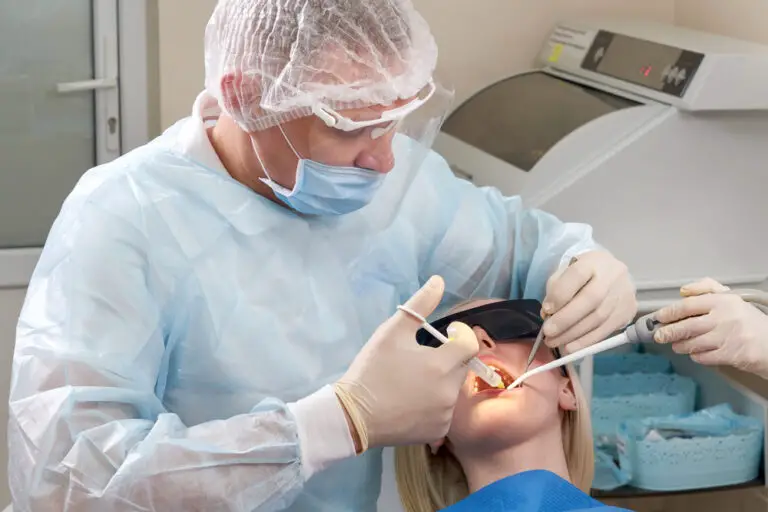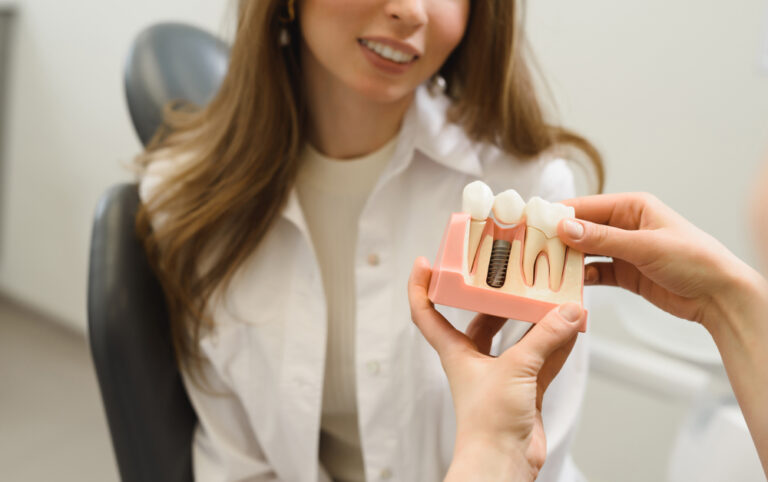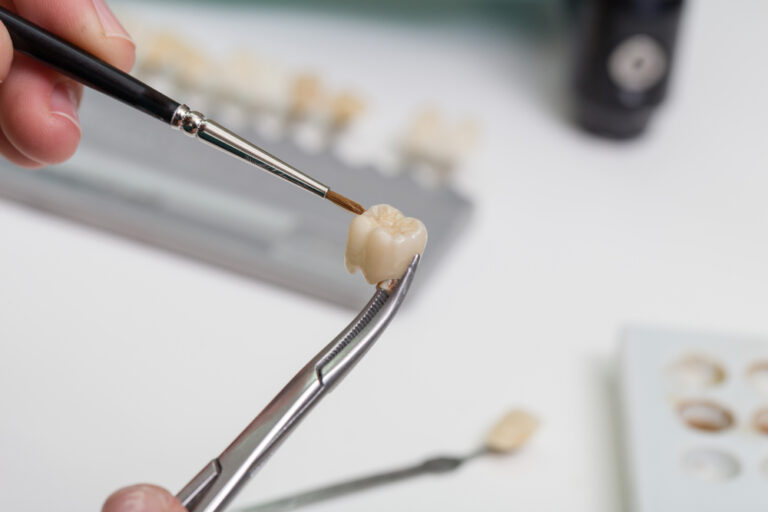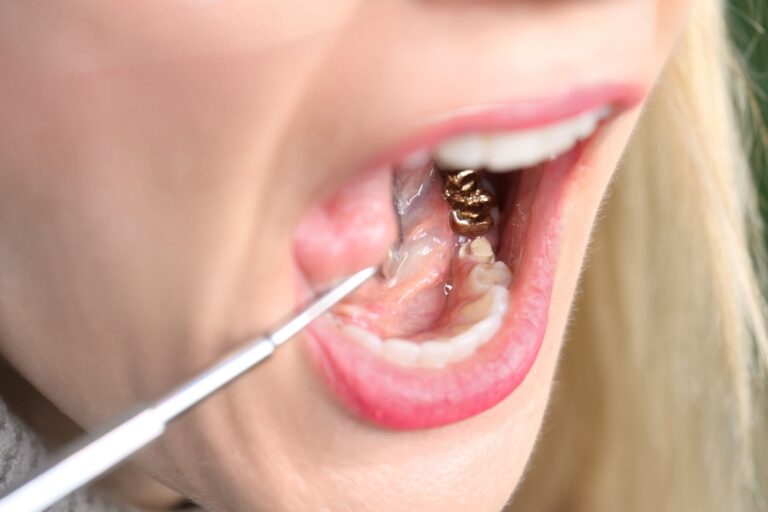Did you know almost 47% of adults suffer from gum disease in the US? Surprisingly, if left untreated, this common gum disease can worsen and cause serious dental bone loss!
This means the bone around the affected gums and teeth starts to recede. It deteriorates until the teeth loosen and fall out. Without this bone mass, the ability to eat and speak also decreases.
Fortunately, dental bone loss can be treated through grafting. It’s a restorative process to support the jawbone and encourage the growth of new bone. But it can take months to get back your lost smile.
So, how long does it take for dental bone graft to heal? And what should you expect during the procedure? Let’s unpack everything about bone grafting below!
Dental Bone Graft: What & Why?
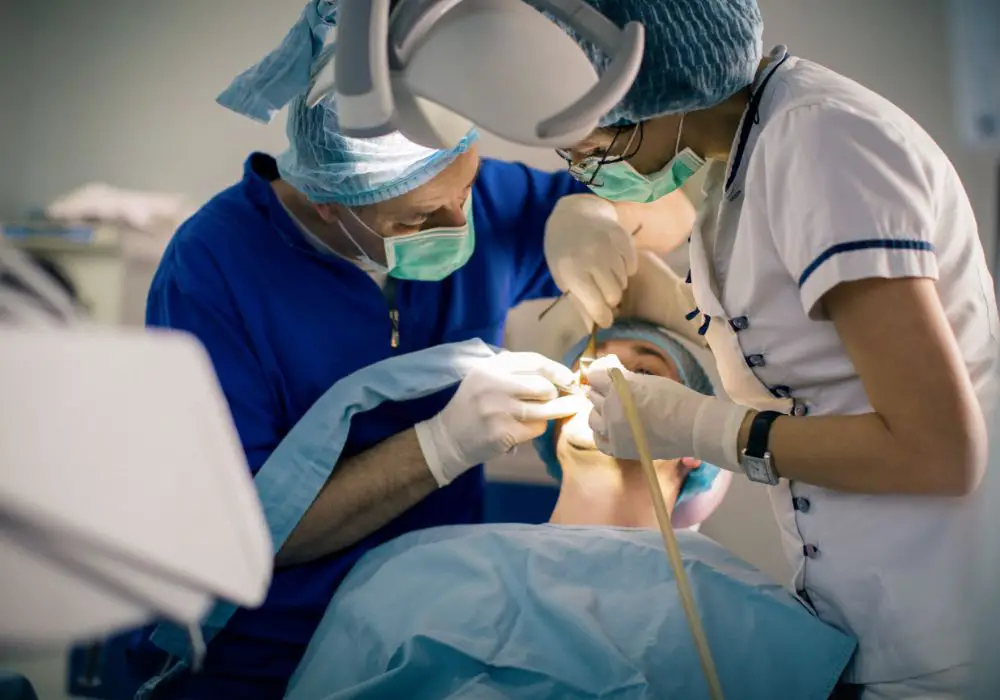
A dental bone graft is a surgical procedure used to rebuild and strengthen the jawbone. In this, the dentist takes graft material and places it in areas where bone loss has occurred. This adds volume and density to the jawbone while stimulating new growth.
Since this is a major surgery, your dentist will only recommend it if you have experienced dental bone loss. This means the bone in your mouth has completely receded and fallen out. Usually, this happens because of gum disease.
Also called periodontal disease, gum disease occurs when plaque builds up on your teeth and gums. The bacteria in the plaque produce toxins that irritate the gum tissues and trigger an infection.
This initial stage is called gingivitis. You’ll experience red, swollen gums that may bleed occasionally. If you treat gum disease at this stage, it’s possible to reverse dental bone loss and prevent major complications.
Sadly, most people don’t consult a professional and try home remedies to soothe the pain. The condition eventually worsens and gingivitis turns into periodontitis. At this stage, bacteria spread below the gum line and attack the tissues.
This leads to the recession of the alveolar bone (the structure that holds the teeth in place) and the loosening of the teeth. If left untreated, the bone will recede completely and cause tooth loss.
Although gum disease is the most common reason behind dental bone loss, you may also experience it because of:
1. Tooth Extraction
When a decayed tooth is extracted, the alveolar bone may begin to shrink and reabsorb into the tissues. This happens because it is no longer being stimulated by the force of chewing.
2. Physical Trauma
Physical trauma is when someone hits you or something crashes against your jaw with great force. This can cause fracture, dislocation, or even dental bone loss.
3. Bruxism
Bruxism refers to habitual teeth grinding. This subconscious grinding can put a lot of pressure on teeth and surrounding bone structures – leading to dental bone loss.
Types of Dental Bone Graft
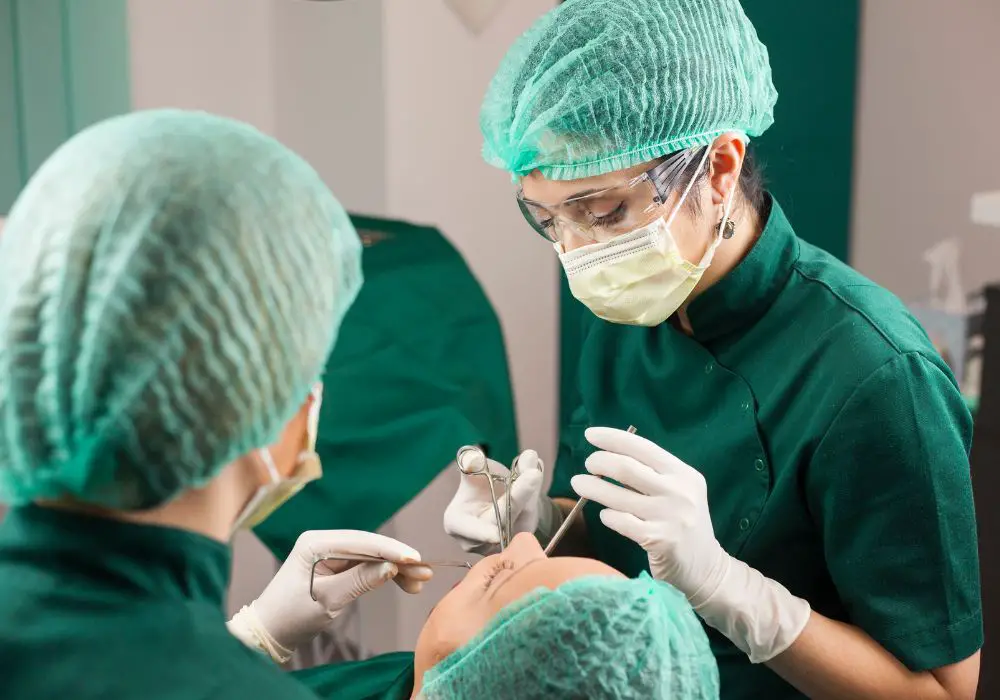
Dental bone loss can occur in different ways. Depending on your particular condition, your dentist will recommend one of the following dental bone graft types:
1. Periodontal Bone Graft
As mentioned, dental bone loss primarily occurs because of gum disease. If this is the case with you, a periodontal bone graft will be placed in the affected areas to regenerate bone and strengthen the jaw.
2. Sinus Lift
If you lost the upper back teeth, then maxillary sinuses (located just above the upper back jaw) can sag. They will leave their original position and occupy the teeth space. This makes it impossible to perform a dental implant.
The dentist will need to lift the sinus and place a bone graft underneath. This will create a stable base and prevent the implant from damaging the sinus membrane.
3. Socket Preservation
When the dentist pulls out the tooth, they will place a bone graft immediately in the empty socket. This type of bone graft preserves the alveolar bone from receding after tooth extraction.
4. Ridge Augmentation
Missing teeth for a long period can cause the jawbone to recede. It becomes thinner and weaker over time. This makes it unsuitable for dental implants and bridges.
So, if you plan to get any of these procedures after some time, the dentist will first perform ridge augmentation to widen and reshape the jawbone.
What Happens During Dental Bone Graft Work?
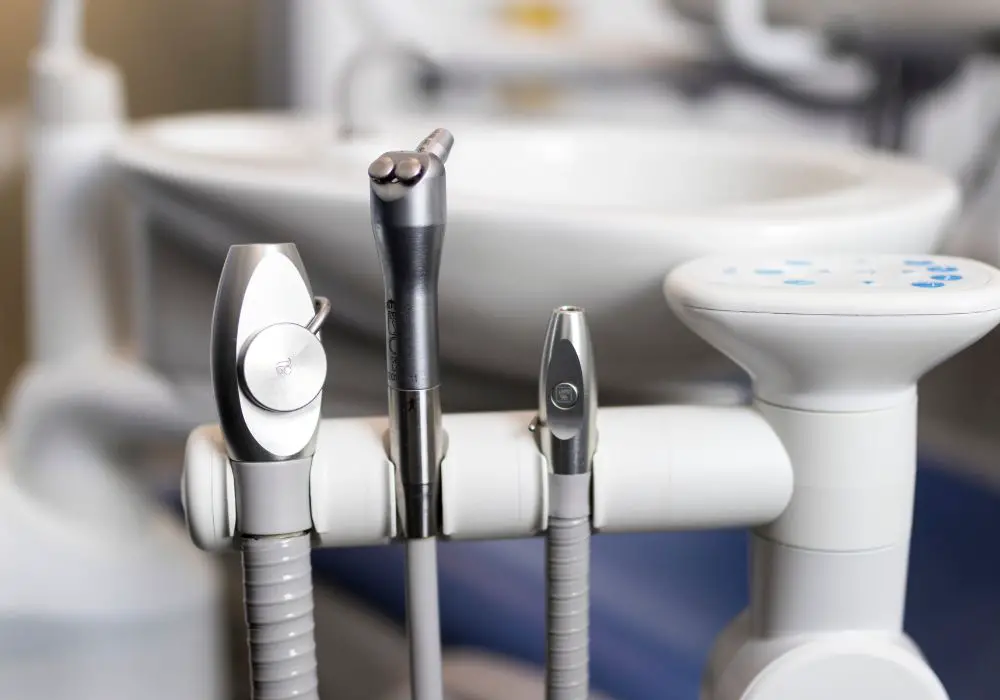
A dental bone graft is not a simple procedure. It involves anesthesia, incisions, and a lot of sensitive parts. And so, it’s important to choose a reputable and highly experienced professional for the job.
Here’s what happens during a dental bone graft:
1. Evaluation
First, your dentist or oral surgeon will examine your mouth thoroughly. They may perform X-rays and CT scans to determine the extent of bone loss. Depending on the condition, they will decide the type and size of graft needed.
2. Anesthesia
Since the surgery will be moderate to highly invasive, your dentist will give you local or general anesthesia to numb the area. This will prevent any sort of discomfort or pain.
3. Bone Graft Material
While the anesthesia works, your dentist will prepare the bone graft material. It can be sourced from your body (autogenous), from another human (allograft), or from an animal (xenograft). It can also be made from synthetic materials (alloplastic).
4. Graft Placement
Once the material is prepared, the dentist will cut the gum tissue to reveal the jawbone underneath. They will clean the area and place the graft at the site where bone regeneration is needed.
If it doesn’t fit or stay in position, the dentist may fix it with screws and pins. After this, they will stitch the incision and the dental bone graft surgery will be complete.
How Long Does It Take For a Dental Bone Graft to Heal?
The first few days after the dental bone graft procedure will be slightly difficult. You will experience swelling, pain, and even bruising on the site. Don’t panic because these symptoms will go away on their own in a couple of days.
But this doesn’t mean your dental bone graft has healed. The healing phase can take anywhere from 3 to 9 months. Sometimes, it can take more than a year!
There’s no definite way to know whether your dental bone graft has healed. You will need to consult the dentist, who will conduct a scan to analyze the graft condition and schedule appointments for dental implants or bridges (if needed).
How to Speed Up Bone Graft Healing?
You can’t speed up the bone regeneration, but what you can do is speed up the recovery time after the surgery. This means you can reduce the pain and swelling in your gums. Here’s how to do that:
- Warm Salt water
Add 1 teaspoon of salt in 4oz of warm water and mix to create a saltwater rinse. Use it 3 times a day to dislodge any stuck food particles and ease the pain. Don’t gargle or aggressively swish the water in your mouth as it can open the stitches.
- Ice Packs
Ice constricts the blood vessels to prevent pain and inflammation. If you have got an ice pack, place it on one side of your face for 20 minutes and then rest for 10 minutes. Repeat until the pain has reduced.
If bone grafting was done on both sides of the jawbone, alternate ice packs after every 20 to 25 minutes.
- Oral Hygiene
Brush your teeth regularly to prevent bacteria from infecting the surgical site. But be careful near the graft. If the bristles brush against it aggressively, the gum tissue will become damaged and start to bleed.
- Soft foods
Take great care of your diet for the first two weeks. Your bone graft will still be very fresh and sensitive. So, you should avoid any kind of damage by eating only soft, room-temperature foods.
Don’t eat hard, chewy, or sugary foods. Also, try to drink liquids more, like milkshakes and juices.
- Skip Vaping
The harmful chemicals in vape and cigarette smoke can irritate your dental bone graft. They can increase swelling and pain. So, it’s best to avoid them until your bone graft is completely healed.
Signs of Failed Bone Graft

Although a dental bone graft is usually a successful procedure, it might fail in some cases. You can identify a failed bone graft by the following signs:
- Severe pain after the first week of surgery
- Pus collecting or draining from the graft
- Gums pulling away from the teeth or graft material
- Swelling and redness around the gums
- Excessive bleeding from the graft
It’s important to contact your dentist immediately. A failed bone graft can quickly transform into an infection – making it impossible to eat and speak without pain. You can also lose your dental bone permanently.
Summary
A dental bone graft is a great solution to regenerate bone tissue and improve the functionality of your jawbone. It allows your jawbone to receive a dental implant or bridge without further complications.
But before getting any more treatments, your bone graft should be healed completely. So, how long does it take for a dental bone graft to heal?
The average timespan is 3 to 9 months. However, since different people have different recovery times, it may also take more than a year. You should visit the dentist regularly to stay updated about the graft condition.

